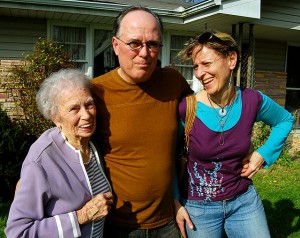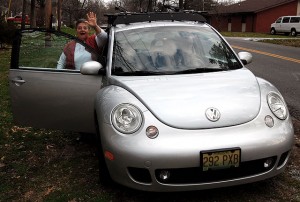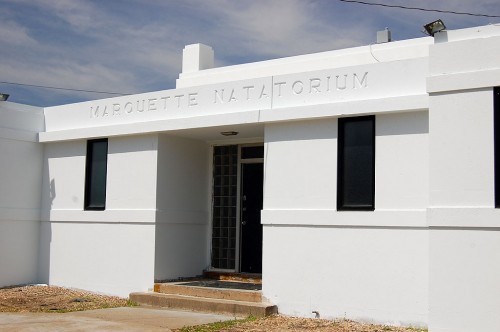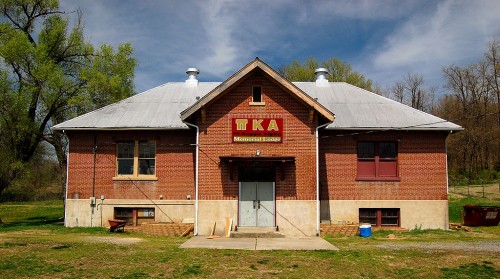 I’ve driven past the Pi Kappa Alpha Memorial Lodge many times, but I never knew much about it. I’ve always thought I’d like to the have the aluminum beer can recycling concession at the place, but that reflects my prejudices.
I’ve driven past the Pi Kappa Alpha Memorial Lodge many times, but I never knew much about it. I’ve always thought I’d like to the have the aluminum beer can recycling concession at the place, but that reflects my prejudices.
The parking lot was empty on Easter Sunday, so it seemed a good time to pull over for a quick mug shot of the building.
I had heard that the building on South Sprigg, just below the cement plant, had been a former school, so I didn’t think it would take long to get its history. Pickings were slim, though.
It was Lafayette School (Nope, see update)
The Pike web site had this to say about it: November of 1973: Pi Kappa Alpha had long been searching for an off-campus building for many functions. In the Fall of ’73 the chapter and its housing corporation found the Lafayette School house on S. Sprigg St. The Pi Kappa Alpha Memorial Lodge, as it would come to be known, serves as a social place as well as a post for weekly chapter meetings.
Paranormal Task Force investigates Pike Lodge
What was more interesting was a 2007 visit to the lodge by the Paranormal Task Force conducting a two-day Ghost Hunting 101 Class with the Adult Education Department of Southeast Missouri State University.
You can get the whole story by following the link above, but here are some highlights.
The SEMO Pi Kappa Alpha (PIKE) Lodge is rumored to be haunted by the spirit of a girl ghost named Jessica who in the early 1900’s met ill fate when this was once the Lafayette Schoolhouse. The stories vary a bit, but the common denominator in all of them involved the old boiler, coal chute and the grate above them.
Eye witness accounts and various online legends report that neighbors have seen the spirit of a little girl through the windows playing jump rope inside or just standing at the front windows watching when a train passes on the nearby tracks. Another story tells of a young neighbor boy who came over when the Lodge was having a meeting asking if it was okay for him to be in there when they were all gone. When the brothers of the Lodge told him no and that was dangerous, the boy told them he came over many times in the past to play with the little girl there.
Other accounts include strange noises, the lights swaying excessively on their own, open windows slamming shut or shaking, strange rappings, the unexplainable malfunctioning of electrical equipment and sinister laughing manifesting where the boilers once were.
What did the PTF team find?
During our mini-investigation we experienced the following:
- Traveling cold spots.
- Unexplainable EMF spikes which moved about and reached levels near 10 milligauss.
- While using two K-2 EMF meters and having two different people hold one each at a good distance apart, we were able to document interaction with an entity there through “yes” and “no” questions with one meter/person being “yes” and the other “no”. This interaction indicated that the entity we were in contact with was male, enjoyed us there and became lonely at times. There was further possible indication through this EMF process and sensitive investigators present that this may have been the spirit of a PIKE Brother who possibly passed away unexpectedly due to a tragic event or happening.
We didn’t spot Jessica
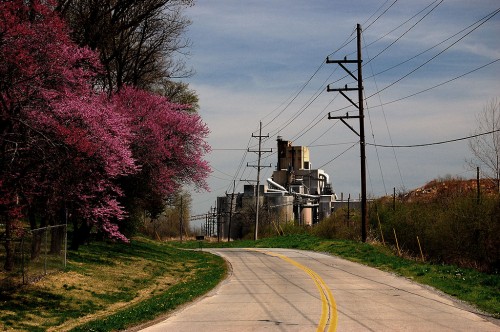 I may have missed Jessica when I looked away from the lodge toward the cement plant. All I saw was Spring starting to make the Winter blahs go away.
I may have missed Jessica when I looked away from the lodge toward the cement plant. All I saw was Spring starting to make the Winter blahs go away.
PIKE LODGE UPDATE UPDATE UPDATE
Several folks have written to question my info that the Pike Memorial Lodge was the former Lafayette School. They think its the old Marquette School. That thought crossed my mind, too, but I assumed that the Pi Kappa Alpha frat boys would know what they had bought.
That was, of course, before I remembered that a buddy of mine, who was an enthusiastic Pike at first, quickly became disenchanted and dropped out when he was taken to task for “spending too much time on academics and not devoting energy to supporting the chapter.”
A reliable source sent me two links to Missourian stories about the dedication of the school in 1924 and the dissolving of the Marquette School District in 1968.
I’m going to go with the consensus that the Pike Memorial Lodge IS the old Marquette School and the Pike who wrote the history of the place was NOT one who spent too much time on academics.
- November of 1973: Pi Kappa Alpha had long been searching for an off-campus building for many functions. In the Fall of ’73 the chapter and its housing corporation found the Lafayette School house on S. Sprigg St. The Pi Kappa Alpha Memorial Lodge, as it would come to be known, serves as a social place as well as a post for weekly chapter meetings.


